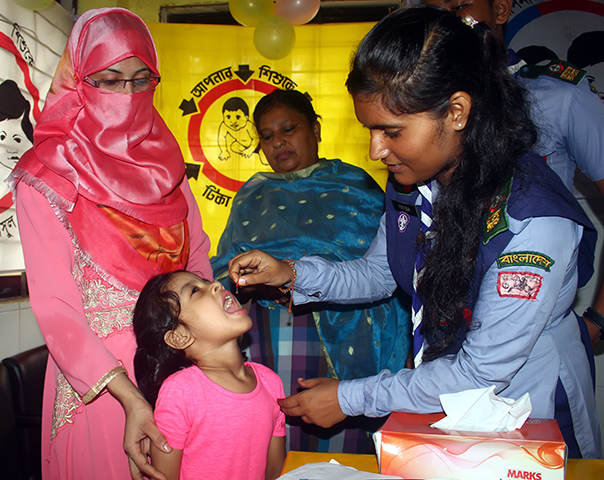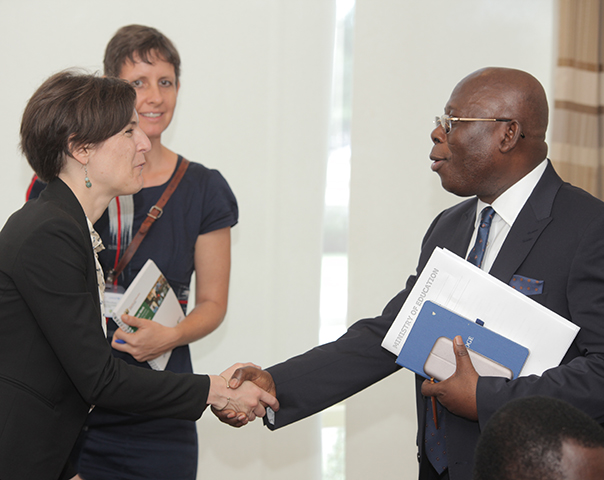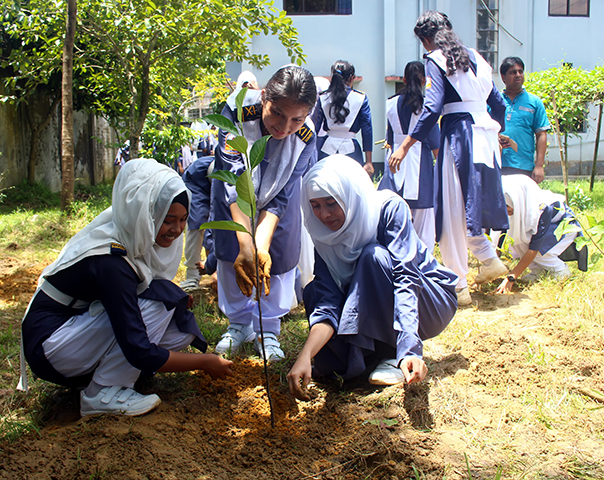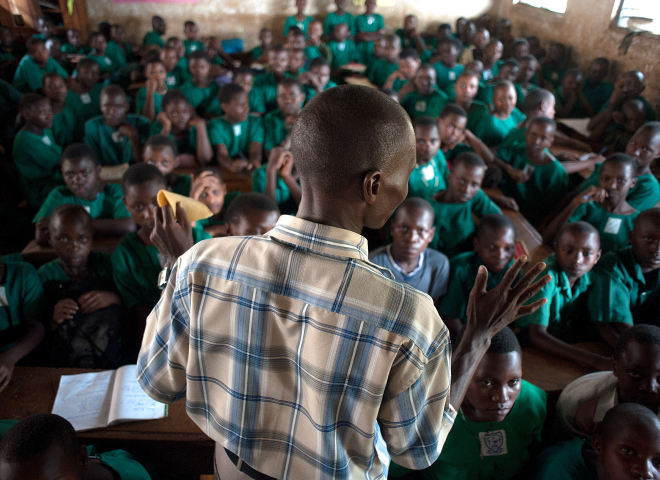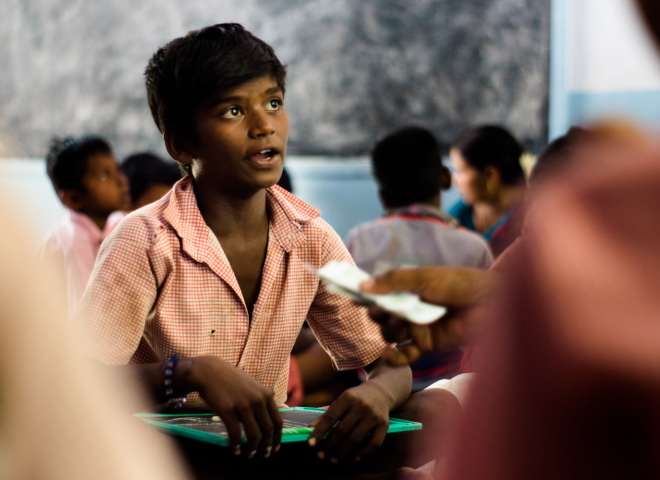The Challenge
Childhood immunization is a crucial aspect of public health, and it is widely acknowledged as one of the most cost-effective ways of reducing under-five mortality. According to the United Nations Children's Fund (UNICEF), immunization against diseases like diphtheria, pertussis, and measles helps avert 2-3 million deaths every year.1 The Centers for Disease Control and Prevention (CDC) stresses the importance of timely vaccination, especially for children under one year of age, who are at the highest risk of infection and death from these diseases.
To protect children under the age of one from infectious diseases, five routine vaccinations are required. The first vaccine is given immediately after birth, followed by a series of three doses of vaccines protecting against diphtheria, tetanus, and pertussis (DTP) that should be administered one month apart. The fourth vaccine is the last dose of this closely spaced series of vaccination. The fifth vaccine is the first of a two-dose series protecting against Measles and is due at nine months of age. However, this vaccine is scheduled almost six months after the fourth vaccine, making it difficult to remember for many parents.
Despite the availability of free vaccines and strong social norms surrounding vaccination in Sierra Leone, a significant number of children are not receiving their necessary vaccinations on time. A survey conducted as part of this study found that 79 percent of communities believed that parents who fail to vaccinate their children are negligent. However, only 56 percent of children complete the first-year series of vaccinations, with many receiving them late.3
Vaccination promotion is critical in Sierra Leone due to the high rates of infant (75 deaths per 1,000 live births) and under-five mortality (134 deaths per 1,000 live births), which are among the highest globally.4 Furthermore, administering vaccines can prevent one-third of under-five diarrheal disease hospitalizations in the country. In addition to disease prevention, vaccination visits provide an ideal opportunity to monitor the overall health and well-being of children by recording their weight, height, and development, enabling the early detection of health issues such as malnutrition.
The Evaluation
The researcher worked with IPA Sierra Leone and partnered with the Ministry of Health and Sanitation of Sierra Leone to implement a randomized evaluation aimed at improving rates of childhood immunization using color-coded bracelets. The study was conducted across 120 clinics in four districts of Sierra Leone: Kambia, Bombali, Tonkolili, and Western Area Rural, representing 10 percent of the country's public clinics. The study randomly assigned clinics to four groups, each receiving a specific intervention to test the effectiveness of bracelets as social signals in promoting vaccination and to determine the optimal placement of the bracelet in the vaccination sequence. All children in the same clinic received the same intervention.
Group 1, Signal at 4: enables others to determine whether a child was vaccinated on time for four or more vaccines or received fewer than four vaccines or had them late.
Children receive a yellow "1st visit" bracelet when they come for the first vaccine, and if they come timely for all vaccines up to vaccine four, the yellow bracelet is exchanged for a green "4th visit" bracelet. If a child comes late, the bracelet is exchanged for an identical yellow "1st visit" bracelet. At vaccine five, the bracelet is exchanged for a new and identical one irrespective of timeliness.
Group 2, Signal at 5: enables others to determine if a child received all five vaccines on time, or received fewer, or took them late.
Children receive a yellow "1st visit" bracelet when they come for the first vaccine, and if they come timely for all vaccines up to vaccine five, the yellow bracelet is exchanged for a green "5th visit" bracelet. If a child comes late, the bracelet is exchanged for an identical yellow "1st visit" bracelet.
Group 3, Uninformative Bracelet: indicates whether a child has started vaccination but does not provide information on the completion of later vaccinations or their timeliness.
Parents choose a green or yellow "1st visit" bracelet when coming for the first vaccine, and at vaccines four and five, the bracelet is exchanged for a new, identical "1st visit" bracelet of the originally chosen color.
Comparison group: Children do not receive any bracelets at vaccinations.
This design enabled the researcher to identify whether any effects were being driven by social influence, or by something else––that is, the bracelets could serve as a reminder to vaccinate or help others learn about vaccinations, or be valued as jewelry for a child for example.
Researchers measured impacts on timely and complete immunization, caregivers’ knowledge about immunization, their understanding of the bracelets, and beliefs about other children’s immunization status. Data on immunization visits was collected through survey data and administrative records throughout the program. IPA visited clinics regularly to monitor the program implementation, check the internal consistency of records, and digitize the administrative data.
Results
Overall, the evaluation found that bracelets can increase timely and complete vaccination in the first year by nine percentage points. The bracelet that signaled all five immunizations had been completed on time was by far the most effective.
Caregiver knowledge: The use of uninformative bracelets did not result in any significant improvement in caregivers' knowledge about children’s immunization status in their community. In contrast, in communities that received the “Signal at 4” and “Signal at 5” bracelets, the green (timely completion) bracelet led to an improvement of 18 percent and 37 percent, respectively, in accurate knowledge compared to the uninformative bracelet. Conversely, the yellow bracelet had no effect as it was more difficult to interpret correctly, requiring caregivers to know both the child's age and the vaccine's due date.
Immunization completion: The “Signal at 5” bracelet led to large and significant increases of 10.3 percentage points for the timely completion of four vaccines and 13.3 percentage points for the timely completion of all five vaccines. Impacts remain large and statistically significant (10.5 percentage points) in comparison to the uninformative bracelet, providing evidence that parents valued the bracelets as signals.
In addition to the effects at the fourth and fifth vaccine visits, “Signal at 5” also led to significant increases in the share of children that were vaccinated on time compared to the comparison group and uninformative bracelet for three (7.2 and 4.4 percentage points) and two (3.3 and 1.6 percentage points) visits.
Overall, “Signal at 5” had a significant impact on increasing the average number of vaccines completed in a timely manner. Compared to the comparison group, the average number of vaccines completed increased from 4.1 to 4.5, which represents a 9 percent increase. When compared to the uninformative bracelet, the average number of vaccines completed increased from 4.2 to 4.5, representing a 6 percent increase.
The “Signal at 5” bracelet also increased the completion of the DTP (diphtheria, tetanus, and pertussis) series by six months of age to levels that are necessary to reach herd immunity for diphtheria, thereby protecting young children at the time when they are most susceptible to contracting the disease.
The evaluation revealed that the use of “Signal at 4” bracelets did not result in a significant increase in vaccination completion. In contrast, “Signal at 5” proved to be more informative for caregivers as it enabled caregivers to signal the timely completion of an additional vaccine perceived as highly important, indicating a higher level of "care". Despite the potential of ”Signal at 4” to signal a "negligent" parent by indicating a failure to complete the first four vaccines on time, the difficulty in interpreting the yellow bracelet makes it less effective.
Cost-effectiveness
An IPA cost-effectiveness analysis of the bracelet intervention found that the cost of the bracelet was less than USD 1 per child. The cost per additional child with timely vaccinations was 2025 USD 7.
Policy Impact and Implications
Based on these results, the project is currently being scaled up across Sierra Leone and will include additional vaccinations.
The research team would like to extend a special thanks to student volunteers Giang Thai, Juliette Finetti, Anna Stamatiadi, and Jonas Guthoff who supported the research project in Sierra Leone and were central to its success.
See IPA’s former student volunteer Juliette Finetti explains randomized controlled trials and the study design here:
And click the link here to see an animated explanation of the study's working paper, created by Econimate (please note that the below hyperlinked video will take you to a separate YouTube page to view the video).
Sources
1. UNICEF, "Immunization Coverage: Are We Losing Ground?," (New York: UNICEF, July 15, 2020), https://data.unicef.org/resources/immunization-coverage-are-we-losing-ground/.
2. Roland Bénabou and Jean Tirole, “Incentives and Prosocial Behavior,” American Economic Review 96, no. 5 (December 2006): 1652–78, https://doi.org/10.1257/aer.96.5.1652.
3,4. DHS. “Sierra Leone Demographic and Health Survey 2019,” October 1, 2020, https://dhsprogram.com/publications/publication-FR365-DHS-Final-Reports.cfm
5. PATH. "Rotavirus Disease and Vaccines in Sierra Leone." PATH, 2017. https://www.path.org/resources/rotavirus-disease-and-vaccines-in-sierra-leone/.





